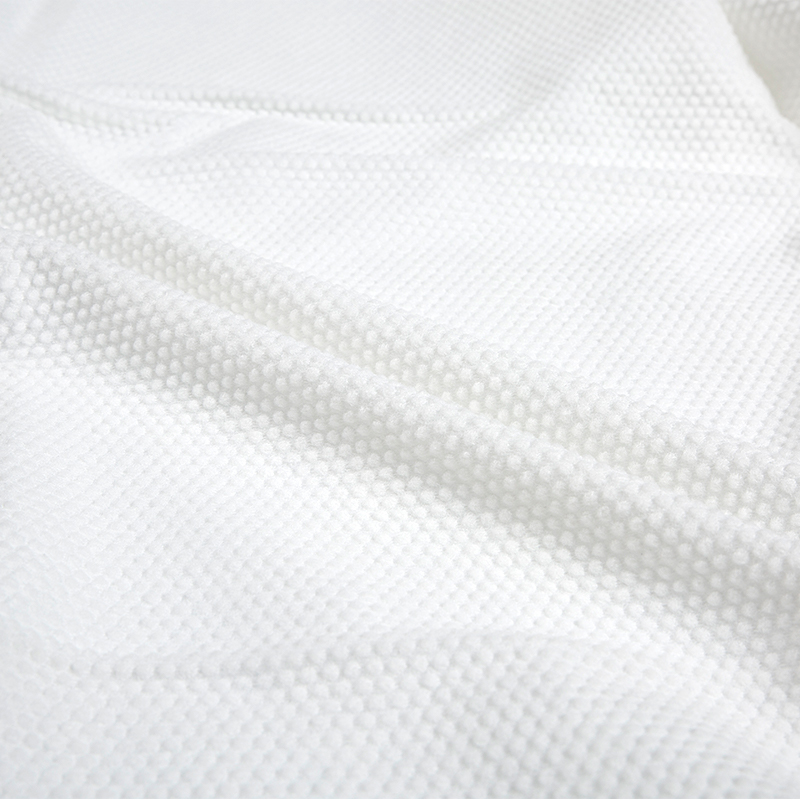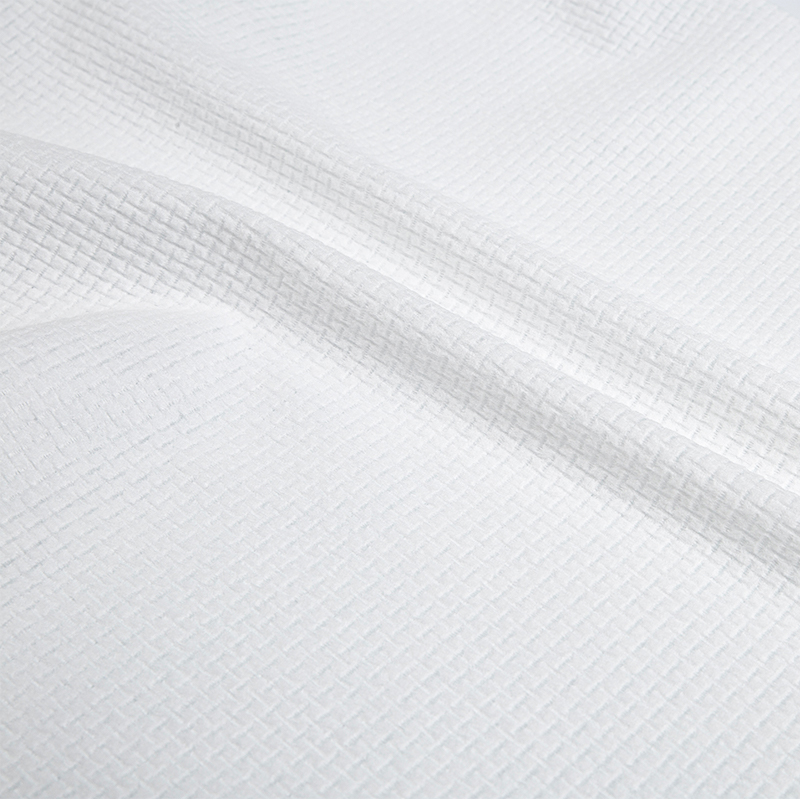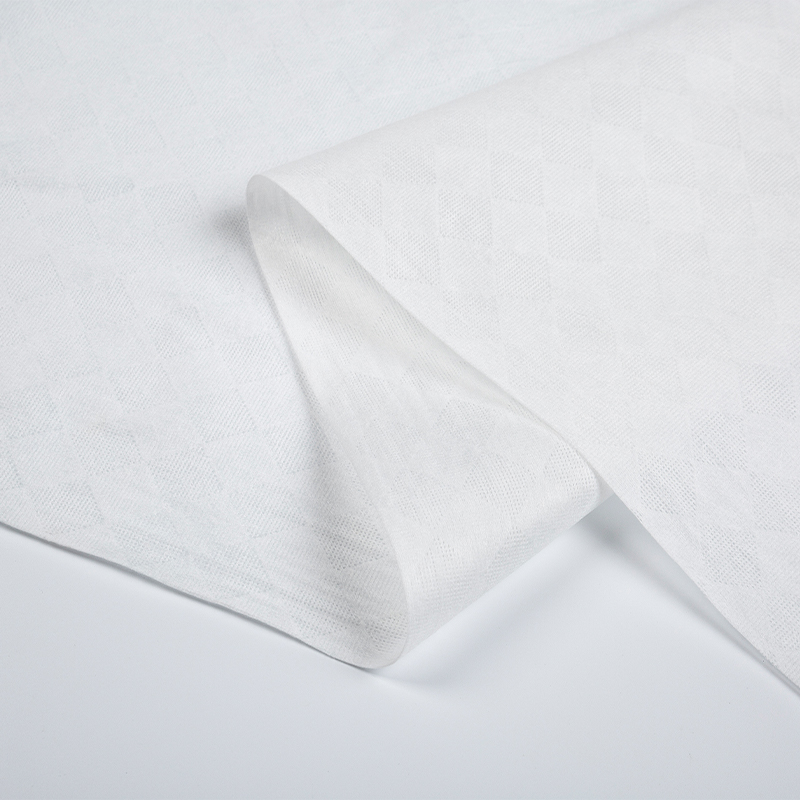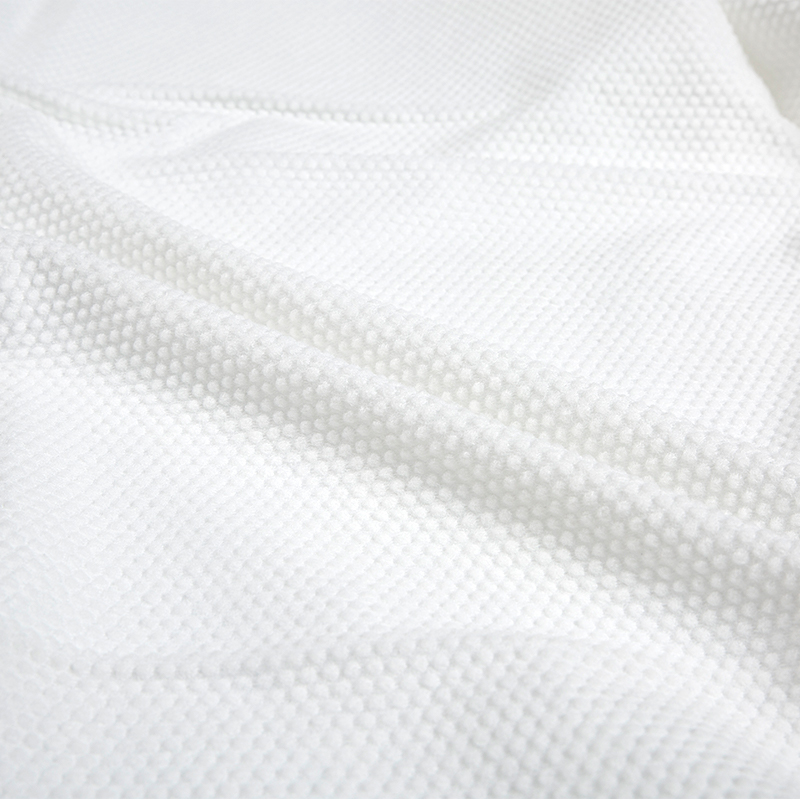Founded in 2022, Hangzhou Shunlong Nonwovens Technology Co., Ltd. is a professional China nonwoven fabric manufacturer and non-woven raw material factory
The significant improvement in the performance of mesh semi-cross spunlace non-woven fabric lies in the three-dimensional transparent framework constructed by its unique mesh structure. The regular or irregular mesh shape breaks the plane constraints of traditional non-woven fabrics and forms a precise three-dimensional network system on the surface of the fabric. This innovation in geometric shape greatly increases the specific surface area of the fabric, making its contact area with the outside world increase exponentially. When liquid contacts the fabric, the pores of the mesh structure are like countless micro-ducts, which quickly absorb the liquid into the interior by capillary effect, and achieve uniform diffusion and efficient storage through the interconnected pore network. Whether it is to quickly absorb a large amount of water or to continuously lock the liquid without leakage, this structure can easily cope with it. The mesh hollow design gives the fabric breathability. In the application of sanitary products such as baby diapers and adult care pads, air can freely shuttle between the pores of the fabric, dissipate the hot and humid air in time, create a dry and comfortable environment for users, and effectively avoid skin problems caused by moisture breeding bacteria.
Breakthrough in flexibility and wear resistance
The semi-crossed fiber arrangement brings a double breakthrough in flexibility and wear resistance to non-woven fabrics. Different from the traditional parallel or vertical fiber arrangement mode, the semi-crossed structure uses a special spunlace process to form a criss-crossed and elastic entangled network in space. When the fabric is bent or folded by external force, these interwoven fibers can slide and deform flexibly, like a resilient spring, effectively buffering the impact of external forces, avoiding wrinkles and cracks, and always keeping the fabric flat and smooth. In terms of wear resistance, the tightly interwoven semi-crossed fibers form a solid protective layer. When the surface of the fabric rubs against the outside world, the strong friction between the fibers can firmly fix each fiber to prevent it from displacement, pilling or breaking. Even in high-frequency and high-intensity usage scenarios such as industrial cleaning, after repeated wiping and rubbing, the fabric can still maintain a good texture and shape, greatly extending its service life, showing durability far beyond ordinary non-woven fabrics.
Full-scale performance improvement
The mesh structure and semi-cross fiber arrangement do not work independently, but the synergy of the two realizes a full-scale performance improvement of non-woven fabrics. The three-dimensional transparent mesh frame provides a stable support structure for the semi-cross fibers, making it less likely to loosen or deform when subjected to external forces, and better exerting its elastic advantages; while the tightly entangled network formed by the semi-cross fibers enhances the toughness of the mesh structure and prevents it from being damaged due to uneven force during use. This complementary relationship allows mesh semi-cross spunlace non-woven fabric to show balanced and performance in different application fields. In the medical field, as a wound dressing, it can quickly absorb exudate to keep the wound dry, and can fit the skin with a soft and strong texture to reduce secondary damage to the wound during dressing changes; in the beauty industry, after being made into a mask cloth, it can fit the facial contour closely, release the essence evenly, and has good flexibility, bringing a comfortable application experience; in the industrial field, when used as a filter material, the mesh structure achieves precise filtration, and the semi-cross fibers ensure that it is not easy to break after long-term use, meeting the needs of complex working conditions.

 English
English 日本語
日本語 русский
русский Español
Español






